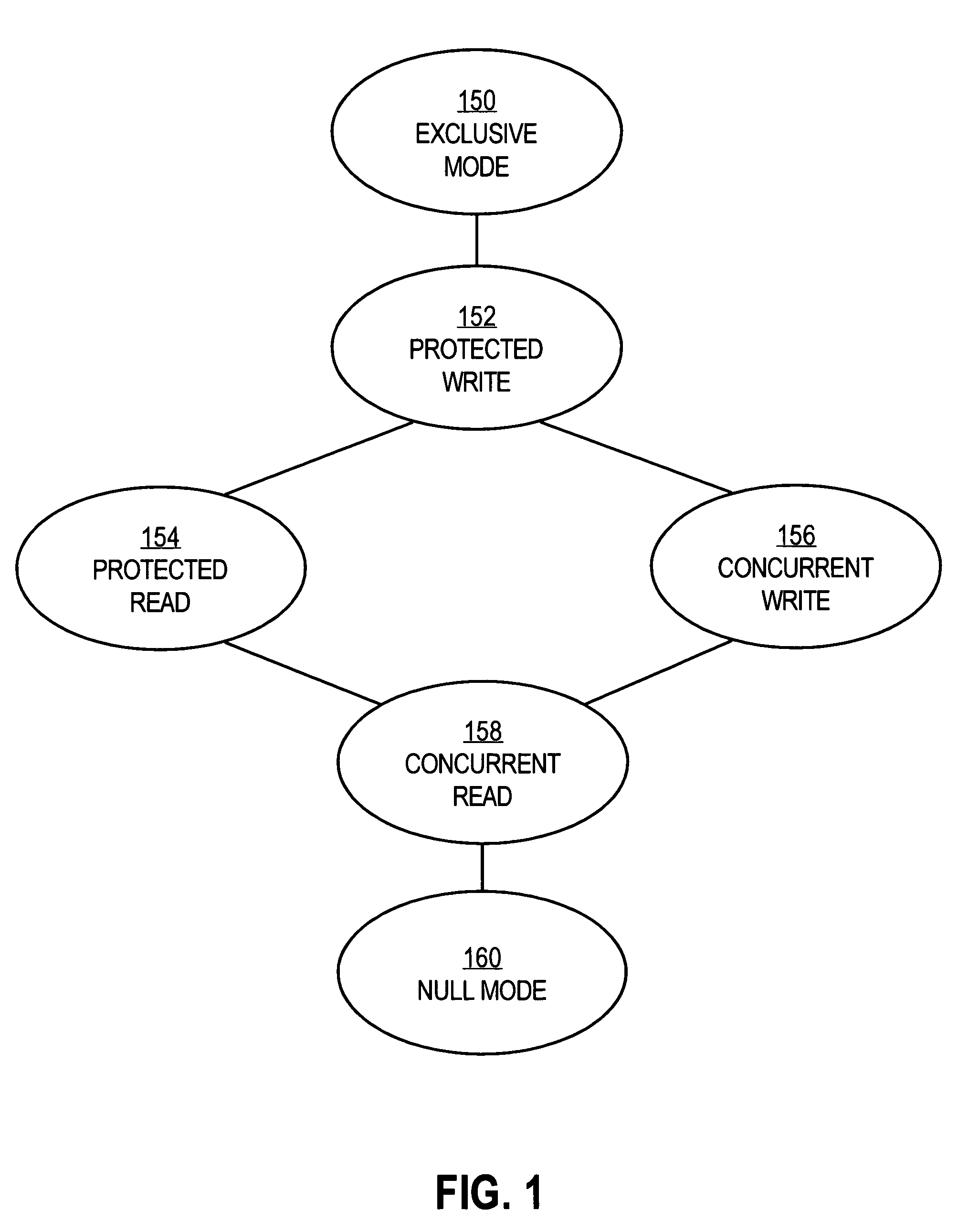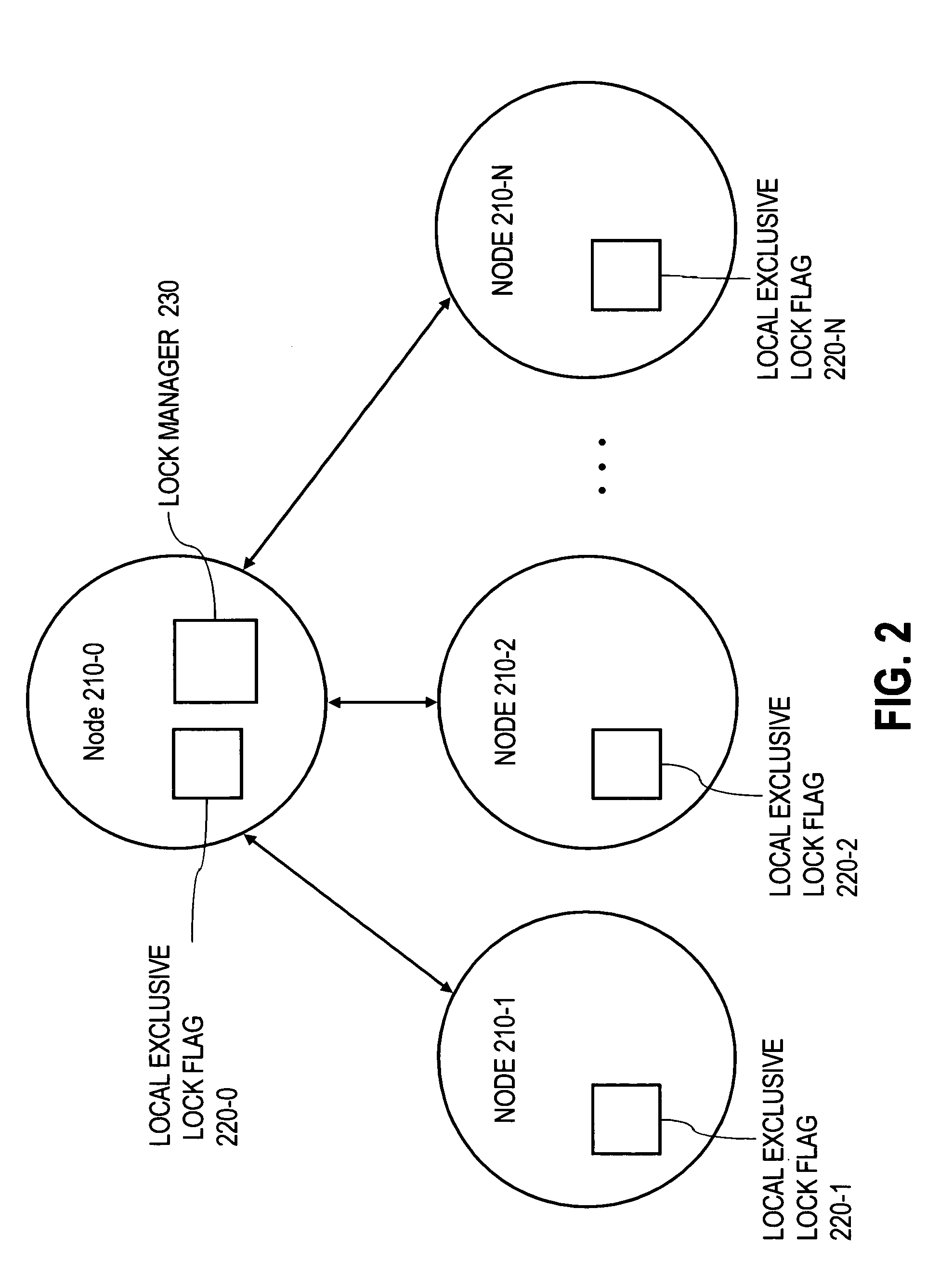Techniques for granting shared locks more efficiently
a technology of shared locks and efficient grant, applied in the field of managing resources, can solve the problems of affecting unable to print more than one document at a time, and certain lock combinations are not allowed, so as to increase the efficiency of managing access to the resource and grant shared locks more efficiently
- Summary
- Abstract
- Description
- Claims
- Application Information
AI Technical Summary
Benefits of technology
Problems solved by technology
Method used
Image
Examples
Embodiment Construction
[0022]Techniques are disclosed for managing resources that are accessible to a plurality of entities. In one embodiment, shared locks on the resources are granted more efficiently by maintaining local exclusive lock flags to indicate whether an exclusive lock has been granted to any entity of the plurality of entities.
Functional Overview
[0023]When an entity of a plurality of entities seeks to acquire a shared lock for a particular resource, that entity checks the local exclusive lock flag for that particular resource. Because the local exclusive lock flag is local to the entity, the act of checking it does not incur the overhead associated with communicating with a remote resource manager.
[0024]If the local exclusive lock flag is “clear,” i.e., indicating that an exclusive lock on the resource is not being held by any entity, then the entity seeking a shared lock acquires a shared lock without communication with the resource manager that manages access to the resource. However, if t...
PUM
 Login to View More
Login to View More Abstract
Description
Claims
Application Information
 Login to View More
Login to View More - R&D
- Intellectual Property
- Life Sciences
- Materials
- Tech Scout
- Unparalleled Data Quality
- Higher Quality Content
- 60% Fewer Hallucinations
Browse by: Latest US Patents, China's latest patents, Technical Efficacy Thesaurus, Application Domain, Technology Topic, Popular Technical Reports.
© 2025 PatSnap. All rights reserved.Legal|Privacy policy|Modern Slavery Act Transparency Statement|Sitemap|About US| Contact US: help@patsnap.com



